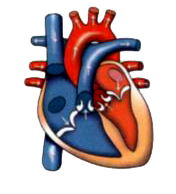(a) Define excretion. Name any two substances that are selectively reabsorbed.
(b) Draw and label the following parts in the human excretory system.
(i) Right kidney (ii) Urinary bladder (iii) Right renal artery
Step-by-Step Text Solution
(a) Define Excretion and Name Two Substances that are Selectively Reabsorbed
1. Definition of Excretion:
- Excretion is the biological process involved in the removal of harmful metabolic waste from the body. This process is essential for maintaining homeostasis and ensuring that the body's internal environment remains stable.
2. Substances that are Selectively Reabsorbed:
- During the process of urine formation in the kidneys, certain substances are selectively reabsorbed back into the bloodstream.
- Two examples of such substances are:
- Glucose: This is a vital energy source for the body and is reabsorbed to prevent its loss in urine.
- Amino Acids: These are the building blocks of proteins and are also reabsorbed to be reused by the body.
---
(b) Draw and Label the Following Parts in the Human Excretory System
1. Drawing the Diagram:
- Begin by sketching the human excretory system.
- Include the Right Kidney, Urinary Bladder, and Right Renal Artery in your diagram.
2. Labeling the Parts:
- Right Kidney: Draw a bean-shaped structure on the left side of your diagram, representing the right kidney. Label it clearly.
- Urinary Bladder: Draw a rounded structure below the kidneys, which represents the urinary bladder. Label it accordingly.
- Right Renal Artery: Draw a tube-like structure extending from the aorta towards the right kidney. This represents the right renal artery. Label it as well.
- Excretion is the biological process involved in the removal of harmful metabolic waste from the body. This process is essential for maintaining homeostasis and ensuring that the body's internal environment remains stable.
- During the process of urine formation in the kidneys, certain substances are selectively reabsorbed back into the bloodstream.
- Two examples of such substances are:
- Glucose: This is a vital energy source for the body and is reabsorbed to prevent its loss in urine.
- Amino Acids: These are the building blocks of proteins and are also reabsorbed to be reused by the body.
- Begin by sketching the human excretory system.
- Include the Right Kidney, Urinary Bladder, and Right Renal Artery in your diagram.
- Right Kidney: Draw a bean-shaped structure on the left side of your diagram, representing the right kidney. Label it clearly.
- Urinary Bladder: Draw a rounded structure below the kidneys, which represents the urinary bladder. Label it accordingly.
- Right Renal Artery: Draw a tube-like structure extending from the aorta towards the right kidney. This represents the right renal artery. Label it as well.
Similar Questions
Draw a diagram of human excretory system and label the following :
(i) Urinary bladder
(ii) Left kidney
(iii) Left ureter
View SolutionGiven below is a diagram of the human heart. Draw it in your notebook and label the following parts.

right auricle
View SolutionGiven below is a diagram of the human heart. Draw it in your notebook and label the following parts.

right ventricle
View SolutionDraw the structure of the human ear and label the following parts: (i) tympanum, (ii) cochlea, (iii) pinna, (iv) malleus, (v) semi-circular canals, (vi) eustachian tube.
View SolutionMention the function of any two of the following used in communication system :
(i) Transducer
(ii) Repeater
(iii) Transmitter
(iv) Bandpass Filter
View Solution(a) Draw a diagrammatic sectional view of the female reproductive system of human and label the parts
(i) where the secondary oocytes develop
(ii) which helps in collection of ovum after ovulation
(iii) where fertilization occurs
(iv) where implantation of embryo occurs.
(b) Explain the role of pituitary and the ovarian hormones in menstrual cycle in human females.
View Solution(a) Draw a diagrammatic sectional view of the female reproductive system of human and label the parts
(i) where the secondary oocytes develop
(ii) which helps in collection of ovum after ovulation
(iii) where fertilization occurs
(iv) where implantation of embryo occurs.
(b) Explain the role of pituitary and the ovarian hormones in menstrual cycle in human females.
View Solution(a) Draw a labelled diagram of excretory system in human beings and label the following: (i) left kidney, (ii) renal artery, (iii) urinary bladder, (iv) urethra
(b) Name the functional unit of kidney.
(c) Name two nitrogenous wastes released from kidney.
View SolutionThe diagram given below is that of a structure present in a human kidney. Study the same and answer the questions that follows :

(i) Name the structure represented in the diagram.
(ii) What is the liquid entering part T called? Name two substances present in this liquid that are reabsorbed in the tubule.
(iii) What is the fluid that comes to part '2' called? Name the main nitrogenous waste in it.
(iv) Mention the three main steps involved in the formation of the fluid mentioned in (iii) above.
(v) Name the substance which may be present in the fluid part '11 if a person suffer from diabetes mellitus.
View Solution(a) Name the hormone that initiates spermatogenesis in humans. Describe the process of spermatogenesis in spermatogenesis in sequence mentioning the ploidy of the cells at each step.
(b) Draw the diagram of a mature human sperm and label the parts that : (i) helps it reaching to the ovum . (ii) providing energy for it to reach the ovum. (iii) helping it to gain entry into the ovum.
View Solution
